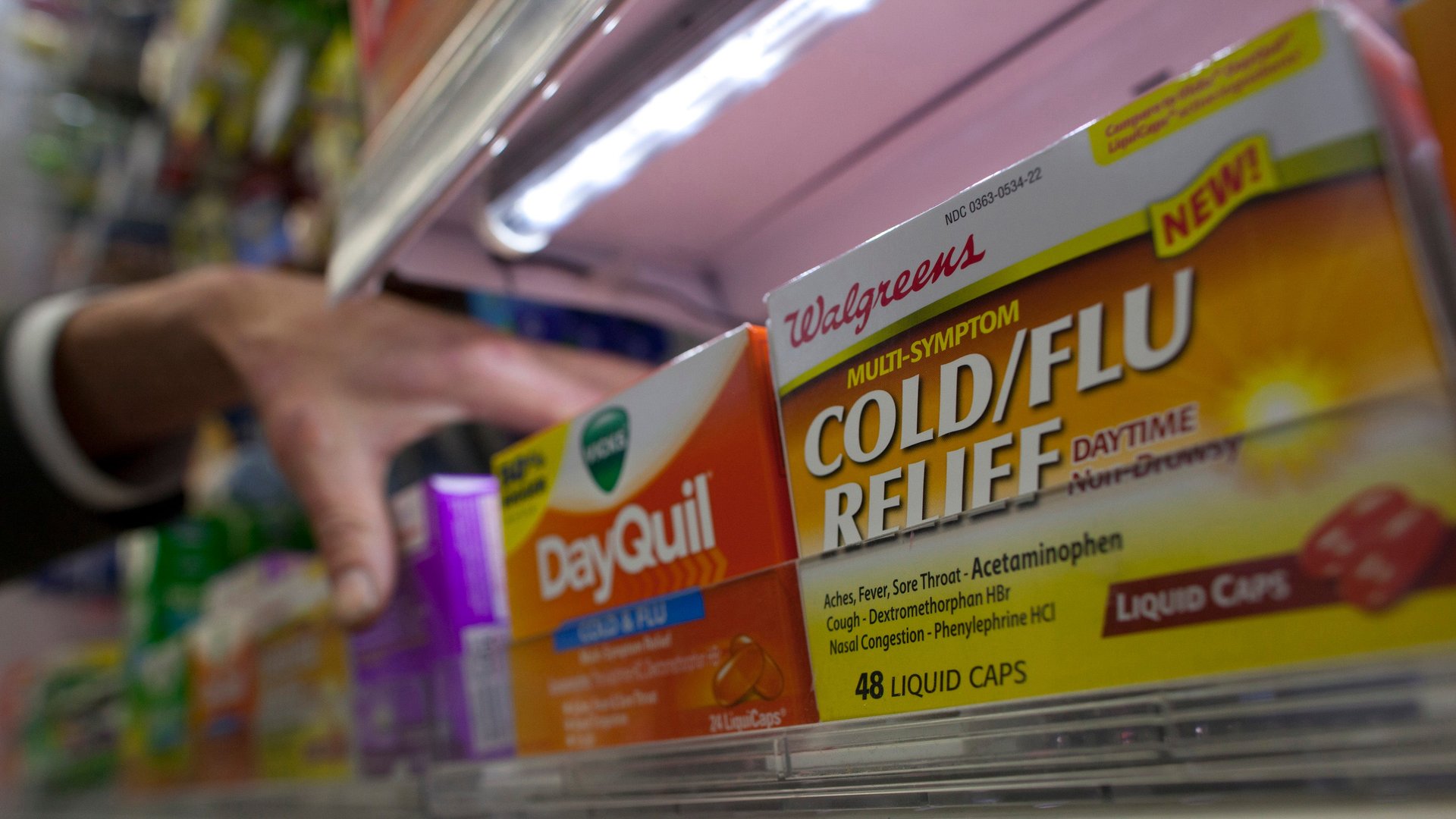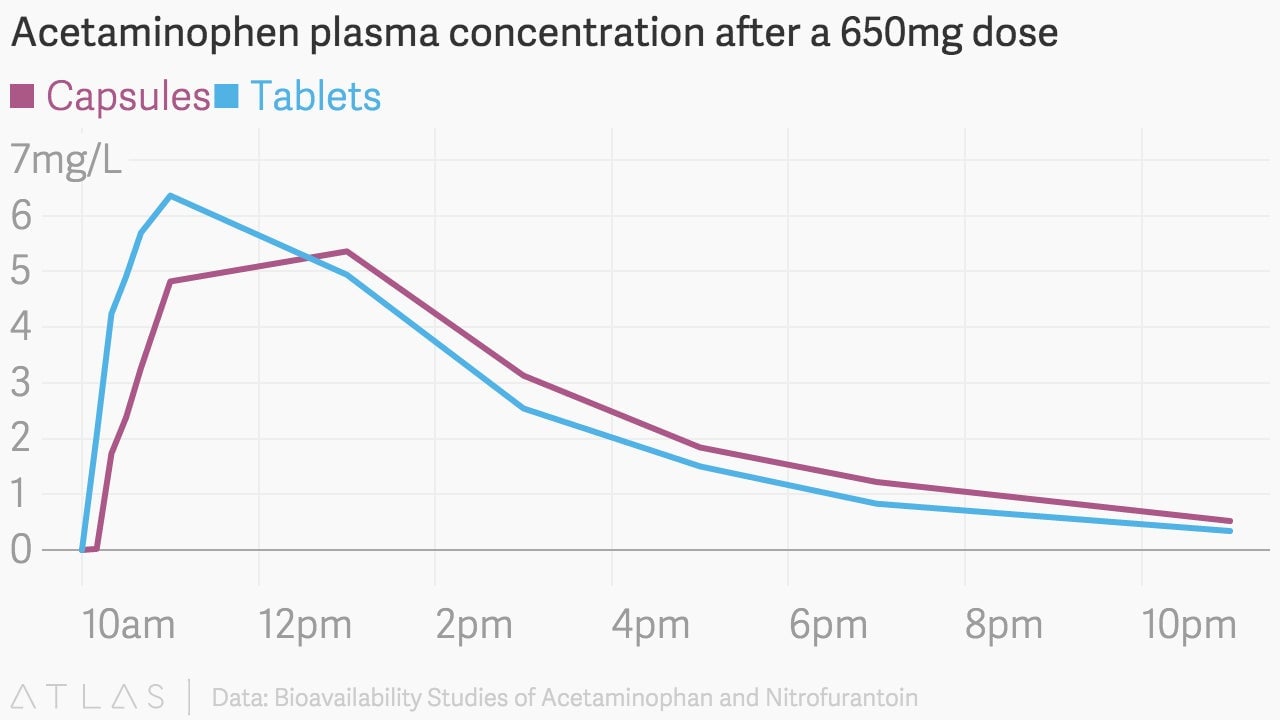The mystery of cold medicine dosing
Dosing instructions for over-the-counter medicines are maddeningly vague: How fast will they work, and how long will they last?


Dosing instructions for over-the-counter medicines are maddeningly vague: How fast will they work, and how long will they last?
Information on the pharmaceutical properties of drugs like cold medications are sparse. What data do exist are difficult to parse for anyone who hasn’t spent years studying them. To make matters more complicated, an effective dose for an individual can vary for reasons ranging from age and weight to the amount of fat in their last meal.
This chart for acetaminophen, the main ingredient in Tylenol, was made using data from a 1971 journal article that used a sample of “ten healthy male volunteers.” It plots the concentration over time for two forms of the drug taken at 10 in the morning:

Why is the available information so sparse that we had to dig up 40 year-old data for this chart? There is no authoritative database of drug behavior statistics, according to government regulators, researchers, and academic pharmacists surveyed by Quartz. That’s not because scientists don’t know how to study them. Hundreds of relevant studies are recorded by the US National Institute of Health (NIH). These studies measure the pharmacokinetic properties of a drug: how it is absorbed and expelled from the body.
But that is still just a vague approximation of how these medicines will affect you. Susanna Wu-Pong, a professor of pharmaceutical sciences at Virginia Commonwealth University, said the specific onset and duration of over-the-counter drugs varies among brands and depending on how it is ingested. “It can even vary within the person, from day to day, or even from the morning to the evening,” she said.
To make matters more complicated, many cold medicines are in fact “drug cocktails” containing three or more active ingredients operating on different timelines. DayQuil, for instance, combines acetaminophen, dextromethorphan, and phenylephrine. Each of these ingredients reaches its peak concentration at a different rate and also lasts for a different amount of time.
So what should you do if you’ve got a big meeting, a runny nose, and a package of cold medicine? The most obvious advice is even more true when taking over-the-counter medicine: Ask your pharmacist. This is one situation in which their personal experience may actually be superior to the best available data.
If you’re traveling, in a hurry or otherwise unable to seek the guidance of your pharmacist the best single source of information Quartz was able to locate was the electronic Medicines Compendium, a site which aggregates Medicines and Healthcare Products Regulatory Agency’s public assessment reports.
In the following table, peak concentration refers to the amount of the drug in the blood, which is a reasonable, though imperfect, measure of effectiveness. Half-life refers to the amount of time it takes for half the medication to leave your blood. Note that each row is for a specific delivery mechanism and the numbers would be different if you took a liquid instead of a tablet or vice-versa.
Still curious? We put together an interactive chart where you can see how the various drug properties affect the concentration of the drug over time.